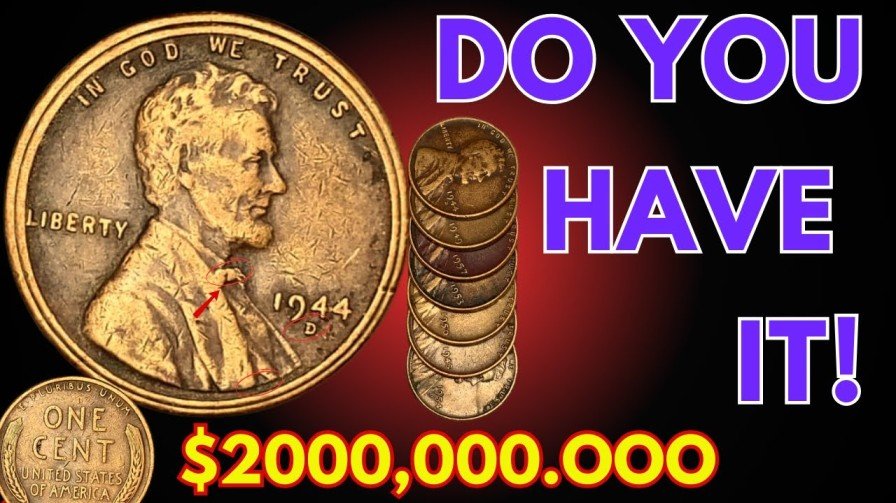Lincoln Wheat Penny Worth $49,000 : Most people overlook pennies, tossing them into jars or pockets without much thought. But what if that tiny copper coin in your wallet could be worth thousands—or even $49,000? That’s the surprising reality of certain Lincoln Wheat Pennies, rare coins that continue to capture the attention of collectors.
Even more exciting? Some of these valuable coins are still in circulation today, waiting to be discovered.
The History of the Lincoln Wheat Penny
The Lincoln Wheat Penny first appeared in 1909 to celebrate the 100th anniversary of President Abraham Lincoln’s birth. Designed by Victor D. Brenner, it was the first U.S. coin to feature a real person instead of a symbolic image.
The front (obverse) displays Lincoln’s profile, while the back (reverse) shows two wheat stalks, representing growth and prosperity. These pennies were minted from 1909 to 1958, after which the design changed to the Lincoln Memorial.
Though billions were produced, certain rare versions have become treasures in the world of coin collecting.
Why Are Some Wheat Pennies So Valuable?
Not every Wheat Penny is worth a fortune. Most are valued at only a few cents. However, a handful are highly valuable because of:
- Low Mintage – Coins made in very limited numbers are rare today.
- Mint Marks – “S” (San Francisco) and “D” (Denver) marks can indicate scarcity.
- Minting Errors – Double dies, missing details, or the wrong metal raise value.
- Condition – Uncirculated or shiny coins command higher prices.
- Historical Significance – First-year issues or special versions are collector favorites.
One of the most famous examples is the 1909-S VDB Wheat Penny, known for its low mintage, which can sell for tens of thousands. Another is the 1943 Copper Penny, mistakenly struck in copper during World War II when pennies were supposed to be made from steel.
How to Identify Rare Wheat Pennies
Here’s what to check if you think you might have a valuable Wheat Penny:
- Look at the Date – Early years (1909–1930s) are often rare.
- Check the Mint Mark – “S” or “D” marks usually signal higher value.
- Inspect for Errors – Doubling, unusual strikes, or wrong metals add big premiums.
- Assess the Condition – Coins in mint or uncirculated condition can be worth many times more.
- Get Professional Help – Use a coin guide or seek an appraisal from experts.
Most Valuable Lincoln Wheat Pennies
| Year & Mint Mark | Key Feature | Estimated Value Range |
|---|---|---|
| 1909-S VDB | First year, low mintage | $700 – $49,000 |
| 1914-D | Scarce issue | $2,000 – $20,000 |
| 1922 (No D) | Minting error | $5,000 – $15,000 |
| 1931-S | Limited production | $100 – $5,000 |
| 1943 Copper | Wrong metal (error) | $50,000 – $200,000+ |
| 1955 Double Die | Strong doubling visible | $1,500 – $15,000 |
As you can see, while most pennies are only worth face value, certain rare dates and errors can turn a single cent into a life-changing payday.
FAQs About Lincoln Wheat Pennies
Q1: Are Lincoln Wheat Pennies still in circulation?
Yes, though rare. Most were collected long ago, but once in a while one still turns up in pocket change.
Q2: What is the rarest Wheat Penny?
The 1943 Copper Wheat Penny is one of the rarest and most valuable, with some selling for over $200,000.
Q3: Do all Wheat Pennies have high value?
No. Many are worth only a few cents, but specific years, mint marks, and errors can fetch thousands.
Q4: Where can I sell a valuable Wheat Penny?
Trusted coin shops, reputable dealers, online auctions, and coin shows are common options.
Q5: How can I preserve my Wheat Pennies?
Store them in protective holders or coin cases to prevent scratches and tarnish.
Final Thoughts
The Lincoln Wheat Penny is more than just spare change—it’s a piece of American history. While most are common and worth little, the rare versions can reach astonishing values of $49,000 or more.
So next time you find a penny in your change, don’t dismiss it. Take a closer look—you might just be holding a hidden treasure.

